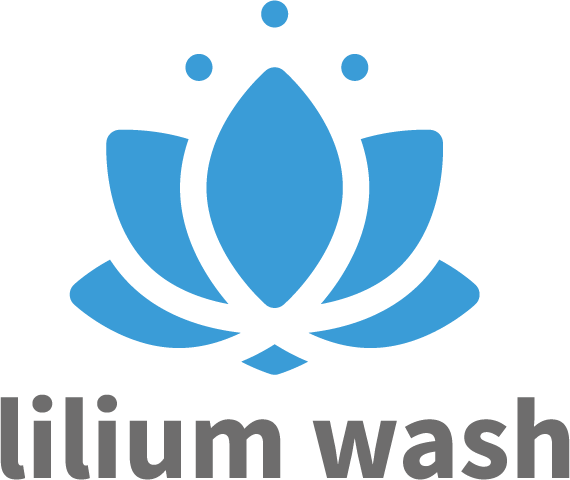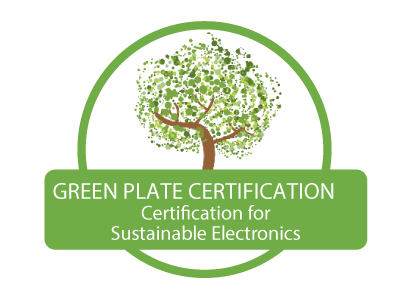A visionary guide for trustful traceability and transparency as a prerequisite for a resource preserving circular economy with non-toxic material cycles
Transforming our supply chains
How can everyone do their part to establish trustworthy transparency and traceability of substances in products along supply chains? How can the transformation to a circular economy based on durable products without toxic substances succeed?
This story attempts in just 20 minutes to answer these questions and provides you with concrete To Do’s for proactive supply chain communication and management.
Without our current production and consumption patterns based on international and widely ramified supply chains our lives would not be as they are today.
take make use disposeAt first glance, they offer many benefits for practically all parties.
However, the problems that our current supply chains create and facilitate become increasingly apparent.
Poor working conditions
Environmental pollution
Harmful substances in products
Supply chains need to be rethought:
Moving away from today’s “take, make, use, dispose”-practices to an economy in which substances, materials and products are thought of and made in the most resource preserving way.

BUT, which actor needs to be involved in the solution for which problem in the supply chain?
Why have actors been so far mostly reluctant to join the call for a transformation towards a resource preserving circular economy that also avoids problematic substances?
What approaches can support this transformation and contribute to addressing these issues?

Transparency and traceability of chemical substances and materials as well as components (and their reparability) and products along the entire supply chain can be part of the answer to these questions.
Let’s see who can pull the lever to build this transparency and traceability and solve the problems…
Meet Lara Jones, 35
Sustainability and Compliance Manager
Lilium wash
„In my job I act as a sparring partner internally and externally on all compliance issues.”
“I set policies and operational guidelines to ensure the fulfillment of legal requirements and the achievement of our environmental sustainability targets in our global supply chain.”

“I really enjoy working at Lilium wash in Darmstadt. We are a family owned OEM company with over 400 employees.”
“The work is multifaceted, as we do not only sell washing machines under our own brand, but also sell our products to big retail brands.”
Every morning Lara is overwhelmed by the number of emails flooding her inbox.
Before she can even think about doing her daily chores, she has to deal with various requests.

Julie Brown, Customer:
„I am interested in buying your washing machine SUS405… Could you inform me about its reparability and tell me if this article contains “substances of very high concern” (SVHCs)? According to Art. 33(2) REACH, I have the right to receive sufficient information about SVHCs.”
Replying to the customer request, Lara sends a certificate she received from the manufacturer and hopes that this resolves the issue.
She knows she is on thin ice here.
The Green Plate Certification only shows that the respective manufacturer stated in a self-disclosure 1.5 years ago, which chemicals are NOT used in their factory.

She has no idea what chemicals are actually in her products.

Labels and certificates are not enough to guarantee compliance today, and even less for tomorrow.
Next, she looks at an email with an invitation to a webinar forwarded to her by a colleague.
From: Webinar Inc.
Invitation Webinar – Special Guest: Susan Hobbs
To: Lara Jones
WEBINAR
Transparency in household appliances? How companies provide information about products to their consumers.
 Guest: Susan Hobbs, CEO of the start-up “Wash it all”, where customers get all information about the production and the proper use and repair of their washing machines. (Including information about containing materials and substances and ways to support the right use, maintenance (incl. upgrading) and disposal of the machines.)
Guest: Susan Hobbs, CEO of the start-up “Wash it all”, where customers get all information about the production and the proper use and repair of their washing machines. (Including information about containing materials and substances and ways to support the right use, maintenance (incl. upgrading) and disposal of the machines.)

After finishing the first round of mails, she checks her phone. She has forgotten to unmute it and has missed ten calls from her boss and a message he wrote to her.

Alexander Conner, Boss:
„This is a very urgent request! Apparently, we do not comply with the ecodesign requirements for washing machines and dryers. We need the information on repair instructions and spare parts as soon as possible.”

The pressure on OEMs and manufacturers is increasing. The European Commission is raising the bar for companies, e.g. in the area of ecodesign requirements, to implement the goals of the Green Deal.
She is unable to respond to her boss's request because a new important message arrives right away.

Julie Brown, Customer:
„Unfortunately, you are not fulfilling the duty to disclose data under the REACH regulation. The reference to a test report or a certificate is not sufficient to answer my request.”
In order to satisfy the customer's request after all, she asks her supplier for the necessary data. But she has a feeling that this way of obtaining information will come to nothing.
A short time later, her suspicions are confirmed.

Jack Smith, Tier 1 supplier:
„I am sorry, but I cannot answer your request as I do not have this information.”

Supply chain companies lack the data they should be providing themselves, because they don’t receive data from their own upstream suppliers.
Lara hopes that her day won't get any worse, but at this very second she opens a letter that makes her darkest fears come true.

Michael Bender, REACH enforcement:
„Dear Sir or Madam,
as the competent authority for the enforcement of REACH in Darmstadt, we have received an enquiry from one of your customers. In this context, we would like you to answer a few questions.”
Lara knows she has to answer all the requests. But she has no idea how to do it.
To find a way out of her situation, she searches again for the right information in her records.
Her head is already buzzing with Excel files, she really doesn't know how to answer the requests and how to move forward.
She sees no other way than to call her boss and tell him about her problems.



Alexander Conner, Boss:
„I have heard of similar problems from our Sustainability Unit.”
„I know we cannot solve these problems overnight. But we have to do something. As a first step, we should develop a comprehensive vision for the coming years. This will hopefully allow us to develop a strategy that will help you with your problems.”
„I will organise a workshop so we can brainstorm about what we want to achieve in the next few years.”
Welcome to the visioning workshop
Welcome to the
visioning workshop
Today we want to look “boldly ahead”:
What support (e.g. technical, capacity building) does each actor need for the desired behaviour?
How do the different actors along the life cycle have to act to make the vision a reality?
What are the benefits for the individual actors resulting from this vision?
What necessary (technical) support does each actor need for the desired behaviour?
What other framework conditions are essential for a functioning circular economy?
After finishing the tasks of the workshop, this is what Lara and her colleagues imagine:
According to the Lilium wash vision for 2030, all actors have the relevant information to fulfil their responsibilities along the entire life cycle of a washing machine, from primary raw material to product, to use, to repair and upgrade, to disposal, and to secondary raw material.
In this vision, a cycle has been created in which resources are used for as long as possible and are not thrown away at the end of the product life cycle, but are used in new products.
According to the Lilium wash vision, the situation of the individual actors and their behaviour has changed significantly:
Producer of Chemicals & Materials:
“My chemicals and materials are used in a wide variety of products. Therefore, I make sure that I only produce substances taking into account assessment data on (eco-)toxicological effects and other environmental and social impacts. At the same time, these substances must fulfil the function required by the industries using them. Appropriate information, such as ingredient lists for materials and chemicals as well as safe use instructions for regulated substances like SVHCs is made available before purchase.”
Product Designer:
“When designing new products, I look for durability, reparability, upgradability, recyclability and other aspects that support the product’s circularity. For this purpose, I select suitable, ecological and non-toxic materials including recycled materials. For this I can rely on assessment data on (eco-)toxicological effects and other environmental and social impacts.”
Producer of Components:
“In the production of innovative materials and products I make sure to use greener chemicals or non-chemical alternatives and adhere to all restrictions on materials and substances. To this end, I use the information provided to me. I have also started to proactively share my own and upstream suppliers’ information with my customers on all materials and substances contained, including concentrations (full material declaration), as well as safe use instructions for regulated substances such as SVHCs.”
OEM, Brands & Retailer:
“In our company, transparency is firmly anchored in the corporate culture as a part of our business model. That is why we only work with suppliers who provide us with the necessary information about their products and components. In addition, we include maintenance services into our business models. Furthermore, we pass on the relevant information to repair facilities, sorters and recyclers. For consumers, we prepare the information appropriately and thus allow for a data-based purchase decision. Besides, we establish a communication channel for consumers to feed in use data from the consumption phase.”
Consumer & Maintenance Service:
“All information regarding substances and materials in products and on their proper use, maintenance and repair is easily available online.”
“When I, as a consumer, really need a new product, I can base my purchase decision on this information and buy or rent the most suitable product. I can also use, resell and dispose of my products appropriately. In doing so, it is okay for me if my anonymised consumption values are documented.”
“During our maintenance or repair service we have access to standardised state of the art spare parts. We share information about when we have installed a spare part in a product.”
Reuse & Refurbishment:
“We are glad that we can now use official disassembly and repair instructions provided online by the brands. When we install spare parts or carry out repairs, we pass this information on to the reseller or consumer. This way, the information can ultimately end up with the sorter and recycler.”
Sorter & Recycler:
“We are in close dialogue with reuse actors about which components are needed for refurbishment. The Recyclers inform us each other about which sorting fractions are in demand and can be processed for recycling. Here we can use the information on the contents of the products made available to us. We produce high-quality secondary raw materials free from problematic substances and pass on the composition of the secondary raw materials to our customers.”
As a result of the behavioral changes, comprehensive transparency in the value cycle has become established.
Incorporating this transparency was only made possible by introducing traceability.
Physical traceability is possible by attaching a product identifier to the material or product. This gives actors the information they need about the product.
The identifier is linked to a data platform with the digital product passport. This passport contains all important information about the product’s contents down to the substance level in a full material declaration.
Effective traceability and transparency also require a governance framework created by all actors involved with core rules that assure the indispensable level of trust.


„Thank you so much for the workshop!”
„I am so inspired and really excited to put the vision into action. I hope we can start right now!”
Lara throws herself into work, determined to finally do something different and change the situation.
However, while trying to start the process towards a new way of working in her company, Lara faces various conflicts created by the different goals of the vision.
Lara now specifically requests information on materials and substances from her suppliers. This information reaches her in a wide variety of formats and employing different reporting rationales.
Even though this leads to Lara having more information at her disposal, she cannot manage the extra work it creates.
Among her suppliers, there are also some who cannot meet the new information requirements.
The suppliers and Lara seem to speak different languages in terms of how they report.
Many different document types and files increase the workload for Lara.
However, it would be a difficult and risky decision to drop a supplier with a long-lasting business relationship and an established basis of trust over this. It’s also socially a No Go.

„I can’t cope with these conflicts and problems. How can I manage this pile of work? I feel left alone.”
Eventually, she falls into old patterns muddling her way through the challenges and not believing that this vision can ever become reality.
Is this the end of the story?
It does not have to be!
What if Lara didn't fall back into old patterns and stopped her way of muddling through?
What could Lara do to move boldly ahead and provide an impulse for realising the vision of a non-toxic circular economy?
Turning the vision “boldly ahead” into action, “muddling through” ultimately leads to a dead end.
The vision workshop, but also the developments in the framework conditions for her company (e.g. at the European level) open a window of opportunity for her.
Lara is convinced: continuing “muddling through” ultimately leads to a dead end. Thus, turning the vision “boldly ahead” into action is the only way forward.
Lara has to use the window of opportunity now. Only then can her problems be solved in a way that benefits her and not just everyone else.
Lara searches for IT solutions supporting supply chain communication that are already on the market. She tests such a solution with a simple product of her company which has a well-organized supply chain. However, not all suppliers report timely and coherently.
Not only does this increase the pressure on suppliers to act, but it also reduces the time and effort they have to spend on customer enquiries. Furthermore, this helps to define the requirements for a circular economy information system between sectors.
Lara's company takes a more proactive approach to its responsibilities and supports less developed suppliers. Some suppliers, however, still need regular nudges to update their data. A new team member supports Lara in her material compliance efforts.
However, in order to actually reach the vision in 2030, the other actors in the cycle must also change their practices. But what might these behavioural contributions look like?
Product designers bring more transparency to the design process. They disclose who makes which decision and when, and what information is needed for this.
In addition, they introduce principles for their design whereby they can integrate the different aspects of the circular economy into the design process and optimise them against or among each other. Risk assessments allow them to become aware of which materials are not suitable for use in circular products.
This gives them a stronger basis to justify their design decisions and practice a future-proof product design, which also benefits the efficiency of risk management.
The producers of chemicals and materials develop a standard for reporting substances (linked to a unique identifier, e.g. CAS number) and coordinate this with the subsequent actors in the supply chain.
To increase the dissemination of a full material declaration, they develop, together with other supply chain actors, exemptions (core rules) for substances that are not considered problematic. Finally, they engage in exchanges and join forces to reduce the barrier of "confidential business information" to the minimum necessary.
Through the IT-supported standardised dissemination of information on product ingredients, chemical producers can answer customer queries in a uniform, automated and proactive manner. In doing so, they reduce their workload, protect themselves from reputational risks and are prepared for future regulatory developments.
The manufacturers of components support their customers in testing existing IT tools and introducing them in their companies.
Together with the downstream user, they work to develop a common standard for reporting substances and materials in products. This standard builds upon existing standards, e.g. IPC1752B, or the technical norm to document compliance with RoHS. This makes it an easy job for users of the existing standards to adopt the new standard.
As a result of their efforts, they are now able to respond to customer enquiries about substances in a consistent, automated and proactive manner. This creates a future-proof business model, also with regard to future regulatory changes.
OEMs, brands and retailers provide relevant product information (e.g. on reparability and (recycled) materials/substances used in a product) at the point of sale to the consumer, to enable their customers to make informed purchasing decisions.
They adapt their product portfolio to push products that comply with circular economy principles and they work, on new business models, which do not focus on the throughput of products, but on their durable use (e.g. rental models).
This enables them to meet the higher demands of consumers and thus establish themselves on the market in the long term.
Consumers use their own right to information, which is available to them through REACH and other legal instruments created under EU Sustainable Product policies aimed at empowering consumers. In addition, they use already existing digital applications to make their purchasing decisions as informed as possible.
They are increasingly moving from thinking to doing, supporting companies that address the issue, even if it means possibly incurring higher costs, and telling friends, family and customers about positive experiences.
Maintenance services can rely on online repair instructions, spare part supply systems and the digital product passport. Thus, the can easily maintain and repair the products even a long time after entering the market.
The resulting transparency empowers consumers to decide for or against a product based on its materials and ingredients. At the same time, they feel confident that the product will not harm their own body.
Meanwhile, maintenance services can make their business models more efficient while expanding to a wider range of products. This improves the customer service experience and creates a high level of customer satisfaction.
The reuse and refurbishment actors join forces with the sorters and form an association to make their voices heard in the transformation process.
Building on this, they engage in the process to make products long-lasting and share information on their experience regarding durability and reparability requirements (especially in product and material design).
Involvement in the development of durable products by reuse and refurbishment actors strengthens their business model and creates more opportunities for repairs.
Sorters remove suitable components for reuse and refurbishment and make them available to the appropriate actors.
Sorters and recyclers communicate which sorting fractions are needed for recycling. At the same time, they liaise with their industry associations to get more involved in the discourse (especially in the area of unique product identifiers).
Furthermore, they use new technical solutions for automated sorting and more efficient recycling of materials.
This creates new sales opportunities and more efficient workflows for them. In addition, the quality of the sorting fractions and recycled materials can increase. Sorters and recyclers also gain certainty about the contents of the recycled materials and can guarantee the compliance of their products in this respect.
In the end, it becomes clear that the path is only a small step for each individual.
However, many small gears have to interlock in order to reach the target state.
What can I do right now?
Click on your matching actor to find out which steps you can already take on the way to the vision.
- Identify SVHCs and potential SVHCs as well as (in future) restricted substances in current articles.
- In this step, the SIN list can be of great help
(https://sinlist.chemsec.org/). - Create consumer transparency: Enter data into AskREACH database.
- Carry out SCIP notification for articles.
- Identify appropriate IT tools for trustworthy information sharing along the supply chain that are available on the market and suitable for your company.
- Actively involve your upstream supply chain actors in terms of material compliance.
- Implement measures for substitution of (future) SVHCs and other declarable or restricted substances.
- Integrate substance substitution and performance standards (durability, reparability, upgradability) into “design briefing”.
- Integrate product related services into your business models in order to expand the use phase of the products, i.a. by means of the digital product passport.
- Do I already have information about substances and materials (e.g. SVHCs and other declarable or restricted substances, or just problematic substances, toxicity data)?
- Can I already get this information from my supplier?
- Which technical possibilities can I use to streamline the process (e.g. already existing digital applications)?
- Risk analysis: Which components are likely to be particularly affected? Address these first and try to work out the composition with your supplier. However, do not lose sight of the big picture.
- Are there specific hotspots in my products that I need to investigate urgently? (You can find information on hotspots at the REACH Helpdesk of Baden-Württemberg (in German); or at the SCIP database).
- If you are not sure, you can consult an expert (e.g. from research or NGO’s).
- Can I design away the hotspot?
- What would have to happen for the hotspot to disappear?
- Integrate substance substitution and performance standards (durability, reparability, upgradability) into the design process
- Identify SVHCs, potential SVHCs and other declarable or restricted substances in mixtures (critically examine impurities).
- In this step, the SIN list can support (https://sinlist.chemsec.org/). Monitor regulatory development regarding additional chemical groups (e.g. PMTs, neurotoxicants) via the public activities coordination tool (PACT).
- Digitise the information from the Safety Data Sheets (SDS) for your company.
- Advocate for the introduction of an IT tool for supply chain communication in your company.
- Team up with other representatives from your sector to streamline communications towards a standard.
- Engage in an open debate about when “confidential business information” is justified as a reason to conceal material composition data.
- Prepare a chemical inventory.
- Identify SVHCs potential SVHCs and other declarable or restricted substances in current articles.
- In this step the SIN list can be of great help (https://sinlist.chemsec.org/). Monitor regulatory development regarding additional chemical groups (e.g. PMTs, neurotoxicants) via the public activities coordination tool (PACT)
- Are there specific hotspots in my products that I need to investigate urgently? (You can find information on hotspots at the REACH Helpdesk of Baden-Württemberg (in German); or at the SCIP database).
- Carry out the SCIP notification for your articles.
- Implement measures for substitution of SVHCs and other declarable or restricted substances.
- Integrate substance substitution and performance standards (durability, reparability, upgradability) into “design briefing”.
- Find out about your rights as a consumer (e.g. REACH).
- Use your consumer rights e.g. with the help of apps like the Scan4Chem app.
- Find out about positive product examples already addressing the issue and support the respective companies.
- Pay attention to the real price. This means being less price-driven in purchasing behaviour and taking responsibility for one's own purchasing decisions.
- Look for prolonged warranty, spare part availability and online documentation of maintenance and repair measures.
- Identify the information you need to offer your customers a best quality (used) product.
- Use the SCIP database to obtain information on SVHCs and other declarable or restricted substances, in products.
- Make contact with your trade association and raise your voice
- Look for online documentation of maintenance and repair measures.
- Identify the information you need to sort or recycle appropriately.
- Consider investments in new technologies, apply for funding e.g. under Horizon Europe.
- Use the information in the SCIP database on SVHCs and other declarable or restricted substances,in articles to learn which products are likely to contain SVHCs.
- Make contact with your trade association and raise your voice.
Curious who we are?
The Research group sofia at the Darmstadt University of Applied Sciences (h_da) created this Scrollytelling, in the context of the transfer-based research project for s:ne - System innovation: Sustainable Development, the project EU-Strategy (funded by the German Federal Ministry of Education and Research) and the EU LIFE project AskREACH.
sofia brings together an interdisciplinary team of professionals: Lawyers and economists are collaborating with engineers as well as social and natural scientists.
Drawing from experience of more than 20 years of research on the governance of material flows towards sustainable development, we are convinced that traceability of chemicals in products along value chains is a key enabler for a non-toxic, resource preserving as well as climate neutral circular economy. This requires that actors along the value chains engage in learning processes to overcome entrenched patterns and routines in production and consumption. The European Green Deal with the regulative innovations it unfolds (inter alia, tracking of substances of concern, digital product passports) creates a window of opportunity to fulfill our vision towards traceability to the benefit of society as a whole, including the economy and the environment.
We support governance design choices targeting sustainable development at every societal level, including regulatory choices of legislative bodies (European Commission, national or regional). We also support public and private organisations in analysing their performance and improving the strategy.
Find out more about our transformative research project s:ne, which aims to support the global leather supply chains to move towards more sustainable chemistry, inter alia by traceability solutions, underpinned by a sector wide governance framework (link). More research focuses on more sustainable chemistry in the textile (link) sector. Visit the EU-LIFE project “AskREACH” aimed to enhance communication on REACH SVHCs between suppliers and consumers, and within the professional supply chain by promoting a reporting approach towards Full Material Declaration (link). sofia also moderated the Proactive Alliance of industry and trade representatives who developed recommendations for a global cross-sector standard for material reporting (link). Find selected research and further advice on the implementation of REACH (in german) (link)
For more information please visit: https://www.sofia-research.com








